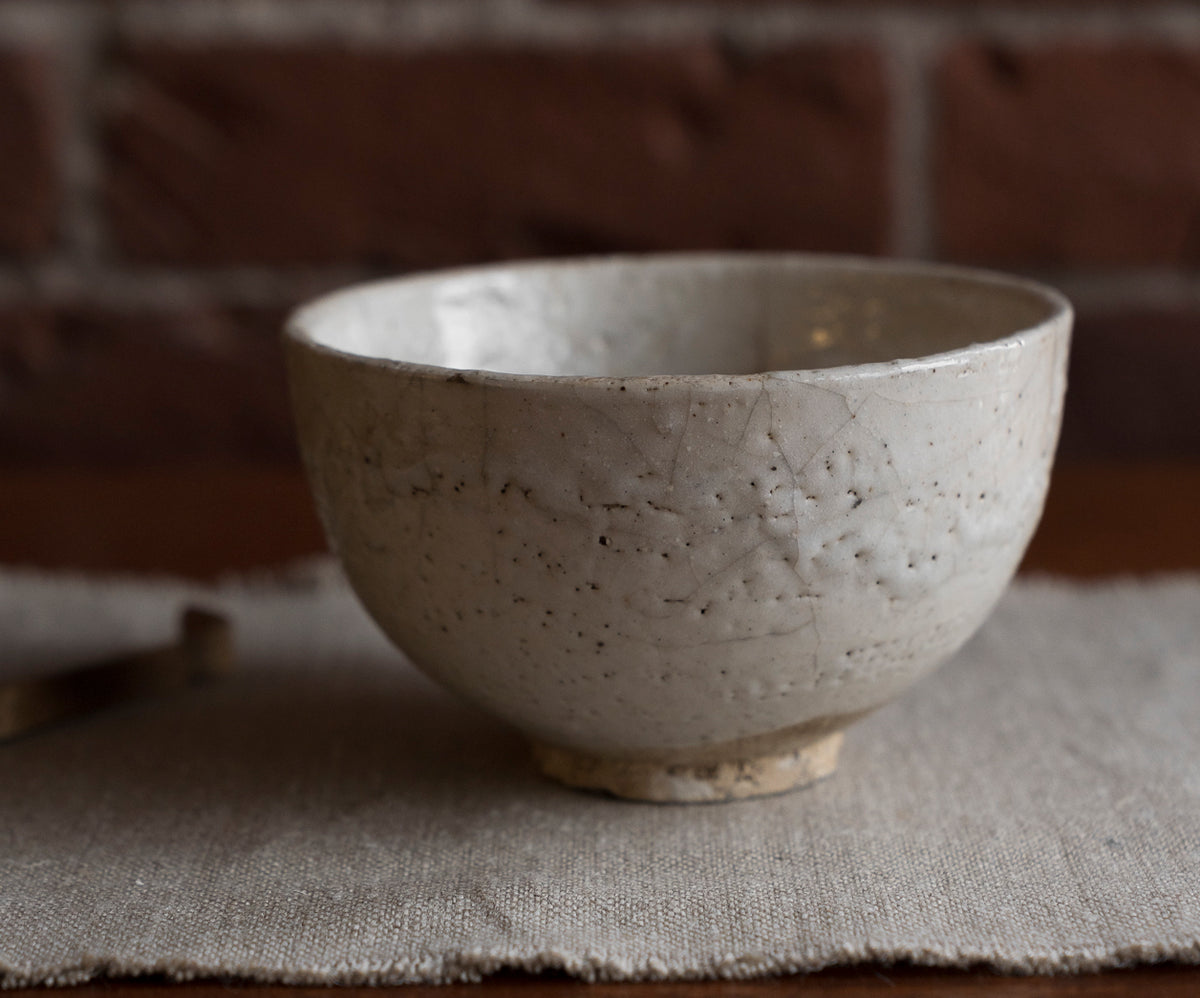- Regular Price
- $19.99
- Sale Price
- $19.99
- Regular Price
- $19.99
- Unit Price
- per

It's said that the essence of tea ceremony is "Ichigo Ichie", a Japanese idiom meaning that each encounter is a once-in-a-lifetime moment.
My path to the art and practice of Chado, meaning "the way of tea," initially began while reading James Clavell's novel, Shogun. Spanning around seven pages long, Clavell depicted a moment of communion amidst a country at war and concluded the section with a statement that stuck with me:
"The cha-no-yu was ended. Now life must begin again."
It was during the pandemic that I began searching for an opportunity to learn traditional Japanese tea ceremony. I needed more discipline in my life, a way to detach and learn something new. After a deep websearch, I fell upon Issoan, a small and obscure tea school based out of Beaverton, Oregon, and endured what became a two-year-long wait for the tearoom to reopen. Issoan, meaning "one grass hut," is run by Marjorie Yap, whom I now know as Margie Sensei (interview with Margie, here). Very quickly, she became someone I respected, a feat not easily achieved by any means. She always emphasizes that Chado is not just about tea, yet it is. That if you remain disciplined, you will learn the way of tea and the way of life.
During the first few months, I always played the role of guest. Sensei showed me how to enter the wood-paneled tearoom and walk over to appreciate the seasonal display within the tokonoma. In the small alcove, a scroll is displayed with an expressively drawn poem in kanji accompanied by a quiet composition of flowers. The room smelled of straw from the tatami mats and was dappled with diffused light from the paper shoji screens. Despite the tranquil atmosphere of the tea room, I was preoccupied with trying not to look clumsy; slamming doors, constantly fidgeting, and bumping into things.
What followed was a choreographed dance of bringing the tea utensils into the room, purifying the tools, warming the bowl, inspecting the bamboo whisk for broken tines, and ultimately preparing tea. The matcha powder was an incredible shade of green, which maintained its vibrant color even when whisked into a delicate froth. Margie Sensei served tea to the first guest, and I studied the interaction in anticipation of what I must do. She mentioned that the matcha is suspended in the water, not dissolved, so appreciation must be quick, as it is intended to be drank after you receive the bowl, acknowledge the guests to your left and right, and raising it in thanks.
After some months, I began to try and make tea, too. I learned how to set up for ryakubon temae (tray-style tea ceremony), how to move gracefully, and where to place my hands and utensils. The details are exhaustive, but I quickly see the aesthetic and hospitable purpose of it all. Sensei and the advanced students help correct me along the way, and it's a relief; the tearoom is the only place where someone will tell me that I'm doing something wrong. Chanoyu, which literally translates to "hot water for tea", is everything I'm bad at, and I'm slowly beginning to let go of the constant performance anxiety I hold so close.
Nearly half a year into taking tea lessons on and off, I'm still a novice; some advanced students have been learning under Margie Sensei for over a decade and would say tea is not something you master or ever finish learning from. With the different tea schools, the seasonal changes to tools, and the different forms of preparation, you constantly feel lost in the details. I still can't remember all the steps for making tea, but I get it now: the concept of always being a student in life.
When I leave the tearoom, breathing feels easier, almost like the world is more welcoming. I drive home from Issoan with a lightness I cannot replicate anywhere else. The Chanoyu has ended, so life must begin again.
